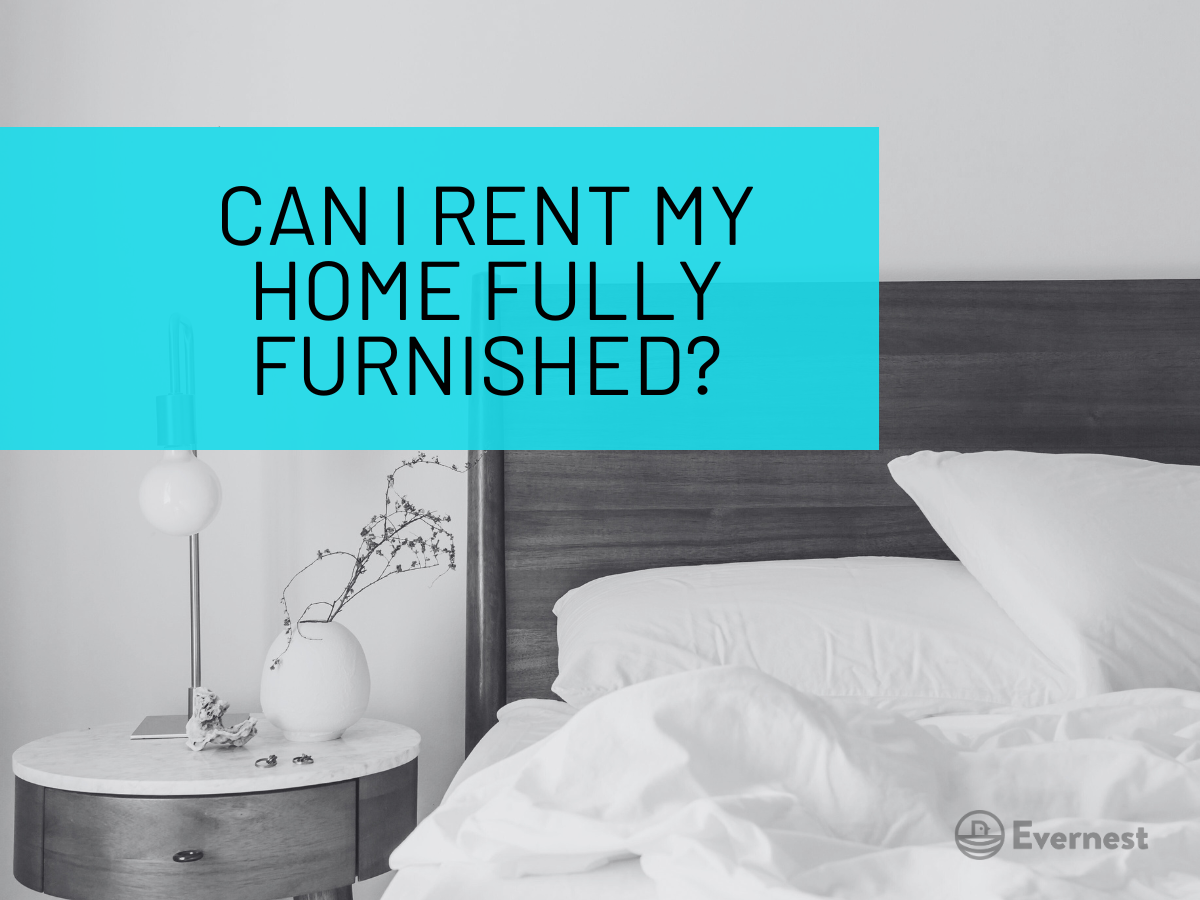One of the most frequently asked questions by DIY landlords is, “can I rent my home fully furnished?” This is especially applicable if you're currently living in the home and are considering moving due to a job change or other milestone but may want to return in the future.
While the idea of leaving furniture in your property and returning to familiar surroundings is tempting, professional property managers like Evernest typically don't rent out homes that are fully furnished.
In this article, we’ll explore why as well as cover some alternatives you might have if you want to rent your home while keeping your furniture onsite.
Why Not to Rent Out Fully-Furnished Properties

There are several key reasons why professional property managers will not manage fully-furnished rentals. Let’s explore a few together.
Protecting Your Furniture is Unenforceable
Professional property managers are reluctant to rent out homes fully furnished mostly because it’s practically impossible to ensure that residents will respect and maintain the furniture. Unlike the home's interior and exterior infrastructure, which can be clearly defined in a lease agreement and inspected regularly, the condition and care of furniture are much harder to monitor and enforce.
For instance, if a resident damages your couch or spills something on your expensive rug, it becomes a complex issue to resolve. The property manager would have difficulty enforcing reparation or replacing the damaged items. Unlike structural damages, which can be quantified and repaired through the security deposit or resident liability, furniture damages often fall into a gray area that is not easily enforceable. This unenforceability makes renting a furnished home risky for professional property managers.
Your Furniture is a Liability
Another significant concern is the liability that comes with furnishing a rental property. Furnished homes can introduce additional hazards that might not be present in an unfurnished home. For example, if you have a glass coffee table and a resident's child falls through it and gets injured, this could result in a liability issue for you as the homeowner.
In cases like this, you could potentially face legal challenges from residents, arguing that the provided furniture was unsafe or unsuitable for their family. This added layer of liability is something professional property managers want to avoid. They aim to minimize risks and potential legal complications, which is why they prefer to rent unfurnished properties.
Furnished Homes Are Harder to Rent
From a market perspective, furnished homes are generally harder to rent out. Most prospective residents already own furniture and are looking for a space to place their belongings. A fully furnished home might not meet their needs, as they would have to find storage for their existing furniture or sell it, which can be inconvenient and costly.
Furnished homes only tend to attract a niche market, often consisting of transient residents like business professionals on short-term assignments or students. While this might seem like an advantage, it typically results in shorter lease terms and higher resident turnover, which can be disruptive and costly for landlords. In contrast, an unfurnished home appeals to a broader audience, increasing the likelihood of finding long-term, stable residents.
The Self Management Solution
If you absolutely must keep your furniture in the home, you might need to explore self-management for your property. Self-managing a furnished rental requires a hands-on approach and a willingness to address potential issues directly.
Here are some considerations to keep in mind if you’re serious about this solution:
Pros of Self-Managing a Furnished Home:
Direct Control: You have complete control over the maintenance and care of your furniture, ensuring it’s cared for and handled as you see fit.
Cost Savings: By managing the property yourself, you save on the property management fees that come along with hiring professionals.
Personal Touch: Residents might appreciate dealing directly with the homeowner, fostering a more personal relationship.
Cons of Self-Managing a Furnished Home:
Time-Consuming: Managing a rental property, especially a furnished one, can be time-consuming. You'll need to handle everything from marketing the property to conducting resident screenings, maintenance, and rent collection.
Distance Issues: If you’re moving away from the market, managing the property remotely can be challenging. You'll need reliable local contacts for emergencies and routine maintenance.
Increased Liability: As mentioned earlier, keeping your furniture in the home increases liability risks. You'll need to confirm your insurance policies cover these additional risks.
These are just some of the pros and cons to consider when choosing the right management approach for your property and individual situation. Check out our article on self-management vs. property management to dig into this question in more detail.
Final Thoughts: Why Unfurnished Rentals Win
If you're considering renting out your home, we believe the best approach is to remove all the furniture from the property. This not only simplifies the rental process and increases the odds you’ll find stable, long-term residents but also reduces potential liability and maintenance issues.
Consider keeping your furniture in a nearby storage unit if you think you'll return to the property in the future. This way, you can safekeep your belongings without compromising the rental appeal of your home.
If you see the benefit of this professional advice and believe more support would make your life as a landlord easier, consider hiring Evernest for your property management needs! We can assist with everything from marketing your property to finding and managing residents, ensuring your property is taken care of and you can enjoy some peace of mind.


